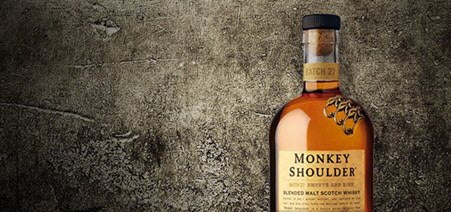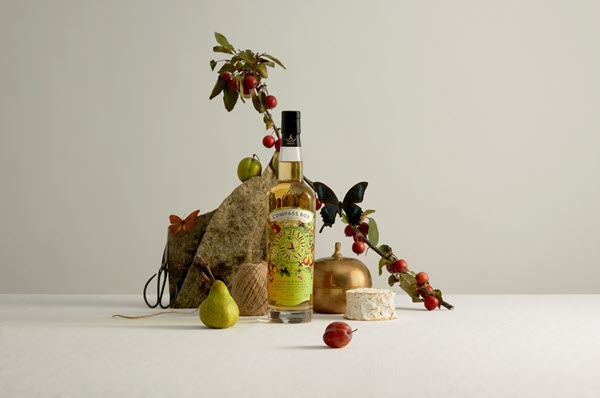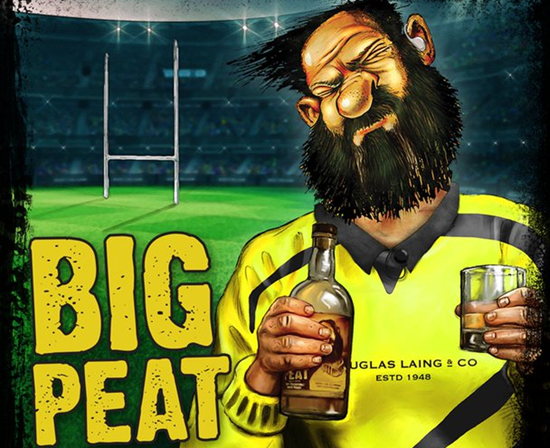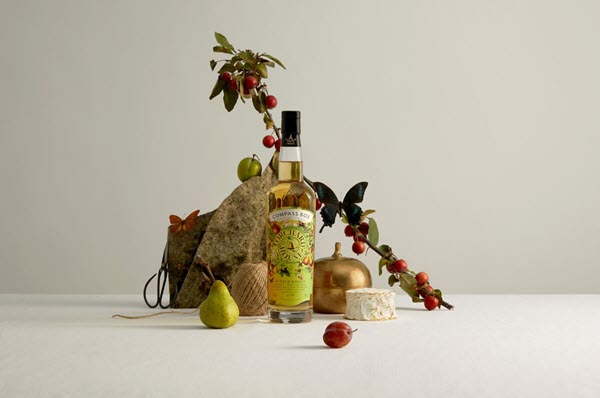Malt's Playful Side
Ian Fraser chronicles the rise of a Scotch whisky category that has become one of its most dynamic, innovative and fastest-growing. It all began with a baptism of fire…
In early 2003, after realising it was running low on supplies of Cardhu single malt, Diageo decided to deceptively rebadge the product as 'pure malt' (then also known as 'vatted malt') blending it with some of its other single malts so it could continue to fulfil strong demand from Spanish drinkers.
By November that year this 'passing off' had backfired terribly, with a host of rival distillers accusing the company of undermining "the authenticity and integrity" of the single malt category. The Scotch Whisky Association obliged Diageo to reverse its sneaky move, eventually banning the term 'pure malt' and reinventing the category as 'blended malts'.
A couple of years later, the category re-exploded, but in a good way, when William Grant & Sons launched Monkey Shoulder, positioning it as a fun and quirky mixer destined for the global on-trade.

By 2018, Drinks International was claiming that Monkey Shoulder had usurped Johnnie Walker as the most popular Scotch in the world's leading bars. And while the brand's status as a blended malt wasn't pivotal to this success, it played a part.
"The fact it's a blended malt possibly liberated them to play the rules slightly differently," says Mossburn Distillers' global brands director, Rick Bennett-Baggs.
Neither of the heavyweight blended malts that sought to emulate Monkey Shoulder – Diageo's Copper Dog, launched in 2013, and Edrington's Naked Malt that evolved out of the Naked Grouse blend in 2021 – has enjoyed the same level of success. Johnnie Walker Pure Malt 15 year old, that dates from 1997 and was renamed Green Label in 2004, also sought to surf the wave. It was discontinued except in Taiwan from 2012, before being resurrected four years later.
"What Monkey Shoulder did was recruit drinkers from Jack Daniels and even from vodka," says Douglas Laing & Co's marketing head Joanne Motion. "Brands such as Copper Dog and Naked Grouse were trying to get a part of that pie."
Compass Box made its blended malt debut in 2001, and today sells a range of such whiskies including Orchard House, The Peat Monster, Spice Tree and The Story of the Spaniard. Marketing director Racheal Vaughan Jones says blended malts provide "an avenue for exploration and discovery, making Scotch whisky more accessible and appealing to a broader demographic."
Neil Mathieson, Mossburn Distillers' chief executive, adds: "The branding is on the playful side and has driven interest in whiskies that people may not recognise as blended malts."

Transparency is core to what Compass Box does. "Our website contains every single recipe for every whisky we've ever created," says Vaughan Jones. However, not all players in the sector are comfortable with listing ingredients. Mathieson said the ten Speyside single malts in Mossburn's Speyside blended malt remain anonymous, partly because the exact mixture varies over time. He says: "It is good marketing to tell people what's in it, but there's a danger of painting yourself into a corner."
Since opening its Torabhaig distillery on Skye in 2017, Mossburn has launched three blended malts - Mossburn Speyside and Mossburn Island, both introduced in 2018, followed by the attractively-packaged Caisteal Chamuis in 2021.
"The blended malt category gives you a degree of liberation from the constraints that exist in the single malt and blended Scotch categories," says Bennett-Baggs. "There's greater scope to develop really interesting brand-led, storytelling-led, playful brands – which is very much the route we've taken with Caisteal Chamuis."
Playful branding also underpins the success of Glasgow-based Douglas Laing & Co's Remarkable Regional Malts, which debuted with Big Peat (a blend of Islay single malts) in 2009. It was followed by Scallywag (Speyside), Timorous Beastie (Highlands), Rock Island (the other whisky islands), The Epicurean (Lowlands) and finally The Gauldrons (Campbeltown) in 2017.

The whole range is packaged in quirky, humorous and accessible ways intended to draw in the non-whisky drinker. "One thing that's key for us is to educate people about blended malts," says Motion. She claims the range is "huge" in Asia-Pacific and Europe, where Big Peat has a loyal fan base. "The UK is only our fourth or fifth biggest market."
Also making waves in the category – which, with annual export value of £270 million in 2022, already accounts for 4 per cent of Scotch whisky exports – are Elixir Distillers' Elements of Islay. The line was launched in 2006 but has since been rationalised into three main products: Sherry Cask, Cask Edit and Bourbon Cask. Others include Whyte & Mackay's Shackleton, introduced in 2017 and Dràm Mòr's Dumbarton Rock launched in January 2023.
The following month, the Asian private-equity-owned Loch Lomond Distillers introduced its Noble Rebel range of blended malts – which includes Orchard Outburst, Smoke Symphony and Hazelnut Harmony.
In August, Eden Mill unveiled The Guard Bridge, a blended malt which fuses the company's own, Fife-made single malt with at least ten others from across the Lowlands and Highlands, and whose square bottle and aquamarine label appear designed to distance the brand from traditional notions of Scotch.
"In the UK, blended malts have been growing faster than the whisky category as a whole. I see that continuing because it is a really good entry point for people and we have the ability through liquid and through branding to recruit new whisky drinkers," said Douglas Laing's Joanne Motion.
The category has many selling points, but it's the flexibility, scope for iconoclasm and inventiveness, and ability to develop flavour profiles which appeal to non-whisky drinkers that make blended malts such an attractive proposition for distillers right now.

Ian Fraser is a financial journalist, a former business editor of Sunday Times Scotland, and author of Shredded: Inside RBS The Bank That Broke Britain.




